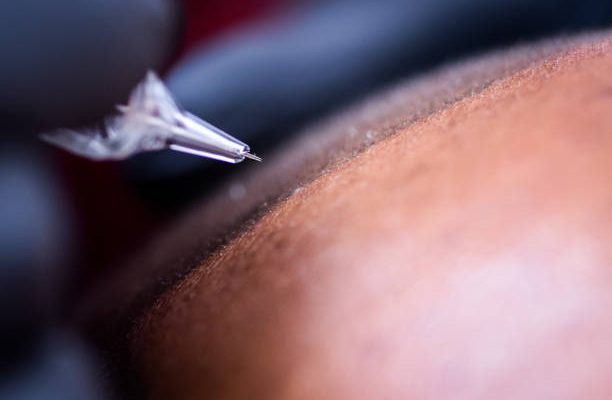Have you ever wondered how some people achieve the appearance of a full head of hair despite experiencing hair loss or thinning? Scalp micropigmentation (SMP) is an innovative solution that can help create the illusion of a closely shaved head or denser hair. In this blog post, we will explore the process of scalp micropigmentation London and how it works to restore confidence in individuals facing hair loss.
Introduction to Scalp Micropigmentation
Scalp micropigmentation is a non-surgical cosmetic procedure that involves depositing tiny pigment dots onto the scalp to simulate the appearance of hair follicles. It is often referred to as “hair tattooing” or “medical hairline tattoo.” SMP can be used to address various hair loss conditions, including male pattern baldness, alopecia, thinning hair, and receding hairlines.
Consultation and Design
The first step in the scalp micropigmentation process is a consultation with a qualified SMP practitioner. During this consultation, the practitioner will assess the client’s hair loss pattern, skin type, and desired outcome. They will discuss the client’s expectations, answer any questions, and develop a personalized treatment plan.
Preparation
Before the SMP procedure, the client’s scalp needs to be prepared. The area is thoroughly cleaned and, if necessary, shaved to a short length to ensure better pigment application. Topical anaesthesia may be applied to minimize any discomfort during the procedure.
Pigment Application
Using specialized equipment such as a micro-needle or tattoo gun, the SMP practitioner carefully applies the pigment dots onto the scalp. The pigment is matched to the client’s natural hair colour and skin tone, ensuring a realistic and seamless result. The practitioner skillfully replicates the appearance of hair follicles by strategically placing the dots, taking into account the client’s hairline shape and density preferences.
Building Density and Layering
After the initial pigment application, the practitioner assesses the scalp’s appearance and may proceed to add more layers of pigment to achieve the desired density and coverage. This process creates depth and a three-dimensional effect, enhancing the illusion of a full head of hair.
Adjustments and Blending
Once the initial pigment application is complete, the practitioner examines the overall look and makes any necessary adjustments. They may further blend the pigment dots with the client’s existing hair or previously transplanted hair, ensuring a seamless transition. This step helps create a natural and cohesive appearance.
Aftercare and Healing
After the scalp micropigmentation procedure, the client will receive detailed instructions on how to care for their scalp during the healing process. It is essential to avoid excessive sun exposure, sweating, and touching the treated area. The scalp may appear slightly red and tender initially, but this typically subsides within a few days. Over time, the pigment settles and fades slightly, providing a more natural and long-lasting result.
Maintenance and Longevity
While scalp micropigmentation is a semi-permanent solution, it requires minimal maintenance. Depending on factors such as skin type, sun exposure, and individual preferences, touch-up sessions may be recommended every few years to maintain the desired appearance. These touch-ups help to refresh and refine the pigment, ensuring its longevity.
Scalp micropigmentation is a highly effective cosmetic procedure for individuals experiencing hair loss or thinning hair. By replicating the appearance of hair follicles, SMP creates the illusion of a fuller head of hair and enhances self-confidence. From consultation to aftercare, the process involves careful planning, precise pigment application, and skilled adjustments.




















